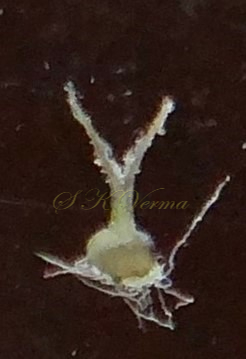AERVA
Aerva
Forssk., Fl. Aegypt.-Arab. 170. 1775; Boiss., Fl. Or. 4: 993. 1879; Hook. f., Fl. Brit. India 4: 727. 1885; Schinz in E. & P. Pflanzenfam. ed. 2, 16c: 50. 1934; Fl. China @ eFloras.org 5: 542; Fl. Pak. @ eFloras.org p. 25.
Perennial herbs or subshrubs, prostrate to erect or scandent. Leaves alternate or opposite; margin entire. Flowers bisexual or unisexual, sometimes polygamous, small or very small, bracteate, bracteolate, in axillary and terminal sessile or pedunculate spikes or panicles. Perianth segments (tepals) 5 or 4, oval or lanceolate-oblong, membranous-margined with a thin or wider green centre, lanose, with only 1 vein; perianth along with fruits deciduous; bracts and bracteoles persistent. Stamens 5 or 4, shortly monoadelphous at base, alternating with pseudostaminodes; pseudostaminodes subulate or rarely narrow oblong and truncate or emarginate; anthers bithecous. Ovary obovoid or subglobose, glabrous, with a single basal pendulous ovule; style very short to slender and distinct, persistent; stigmas 2, short to long and filiform, sometimes solitary and capitate. Utricle ovoid, compressed, membranous, thin-walled, bursting irregularly falling off with perianth or indehiscent. Seeds compressed- reniform, firm, black.
6 species
Aerva javanica
Aerva javanica
(Burm.f.) Juss. ex Schult., Syst. Veg. ed. 15.5: 565. 1819; Boiss., Fl. Or. 4: 992; 1879; Hook. f., Fl. Brit. India 4: 727. 1885; Fl. Pak. @ eFloras.org p. 26; Achyranthes javanica (Burm. f.) Pers., Syn. Pl. 1:259. 1805.
Perennial herb, woody and perennial at base but remaining herbaceous above, multi-stemmed, soft-wooded, suffruticose or growing in erect clumps, 0.3-1.5 m. Stem and branches terete, striate, +/- densely whitish tomentose or pannose. Leaves alternate, sessile or with indistinct to distinct petiole up to 2 cm long; leaf blade linear-lanceolate or narrowly elliptic, ca. 8 cm x 2 cm, become gradually smaller towards apex, +/- densely whitish-tomentose, apex acute, margin plane or involute, base cuneate. Flowers unisexual (plants dioecious), actinomorphic, in sessile, cylindrical, dense and stout to slender spikes, up to 14 cm x 0.5 cm, sometimes spikes interrupted. Upper part of stem and branches leafless, upper spikes thus forming terminal panicles, peduncle and inflorescence axis densely white tomentose Bracts 0.7-2.5 mm, broadly deltoid-ovate, hyaline, acute or obtuse with obscure percurrent midrib, persistent. Bracteoles similar, also persistent. Female Flowers: Perianth segments 5, free; outer 2 tepals 2-3 mm x 1-1.4 mm, oblong-obovate to obovate-spathulate, lanate, acute to obtuse or apiculate at tip, yellowish midrib ceasing well below the apex; inner 3 slightly shorter and narrower, 2-3 mm x ca. 1 mm, elliptic-oblong, +/- densely lanate, acute with narrow green vita along the midrib, which extends up to 2/3rd the length. Filaments much reduced; anthers absent. Carpels 2, syncarpous, ovary superior, globose, 0.5 mm long, unilocular with solitary basal ovule; style slender, 1 mm long, with 2 filiform flexuous stigmas nearly equal to style.
Capsule 1-1.5 mm, rotund, compressed, brown or black, shining and smooth. (Not observed)
Male plants always with more slender spikes. Male Flowers: Smaller than female flowers; 2 outer tepals 1.5-2.5 mm long, ovate; 3 inner slightly shorter. Stamens 5 or 4; filaments delicate; anthers nearly equalling the tepals. Ovary small; style very short; stigma rudimentary. (Male plants not found)
Common Names: Kapok Bush, Desert Cotton, Pillow Weed, Snow Bush; Safed Bui (Hindi)

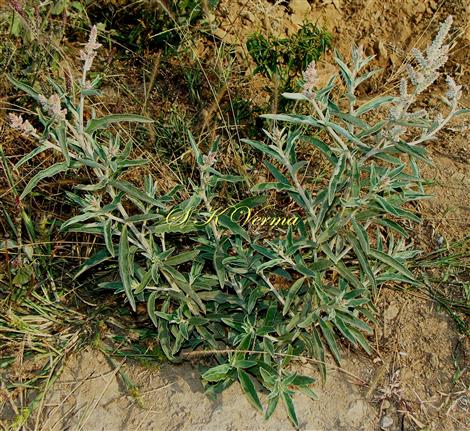
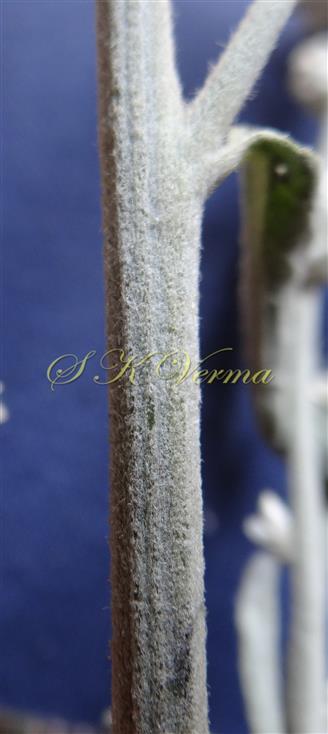
-DSC02274A.jpg)
-DSC09599.jpg)
-DSC09597 - Copy.jpg)
-DSC09598.jpg)
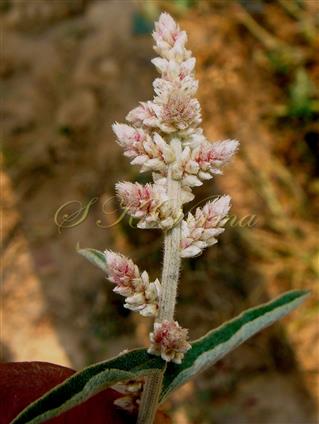


 and a Pistil-DSC09582.jpg)
 and Outer Tepal (Left)-DSC09588.jpg)





-DSC02274A.jpg)
-DSC09599.jpg)
-DSC09597 - Copy.jpg)
-DSC09598.jpg)

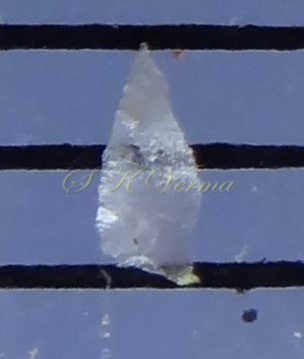
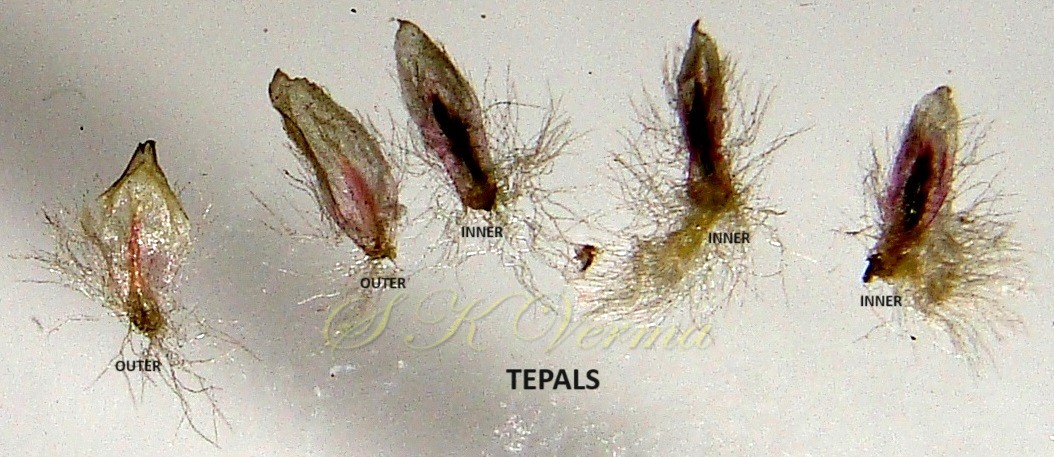
 and a Pistil-DSC09582.jpg)
 and Outer Tepal (Left)-DSC09588.jpg)
